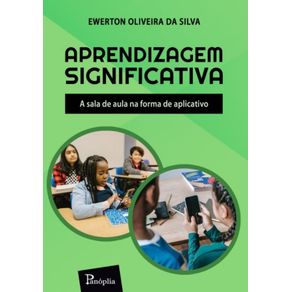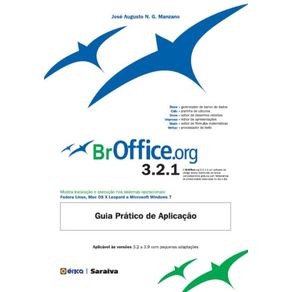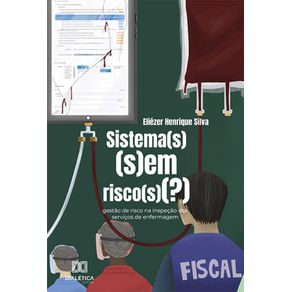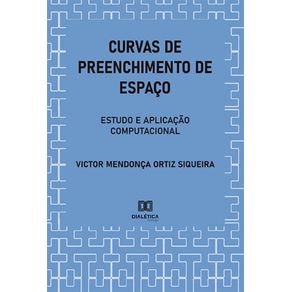| Selo | Morgan and Claypool Publishers |
|---|---|
| Edição | 0 |
| Idioma | Inglês |
| Autores | Gerard Battail |
| Acabamento | Capa Comum |
| Quantidade de Páginas | 208 |
| Origem | Literatura Estrangeira |
 Aprendizagem Significativa: A sala de aula da forma de aplicativo
Aprendizagem Significativa: A sala de aula da forma de aplicativo
Panóplia
R$ 59,90 à vista Método Monte Carlo de varredura de domínio (MCS)
Método Monte Carlo de varredura de domínio (MCS)
Dialética
R$ 89,15 à vista Explorando os fundamentos da Linguagem C para uso em Métodos Numéricos
Explorando os fundamentos da Linguagem C para uso em Métodos Numéricos
Dialética
R$ 99,65 à vista Fronteiras da ciência: coletânea de debates interdisciplinares - Volume 2
Fronteiras da ciência: coletânea de debates interdisciplinares - Volume 2
Dialética
R$ 120,65 ou até 2x sem juros Introdução ao Red Team Operations - Um guia básico para suas operações de Red Team
Introdução ao Red Team Operations - Um guia básico para suas operações de Red Team
Dialética
R$ 83,90 à vista Modelagem Matemática de Doenças Infecciosas - Com aplicação em Python para COVID-19
Modelagem Matemática de Doenças Infecciosas - Com aplicação em Python para COVID-19
Dialética
R$ 120,65 ou até 2x sem juros Mecanismo de cibervigilância baseado em aprendizado de máquina para detecção de malwares
Mecanismo de cibervigilância baseado em aprendizado de máquina para detecção de malwares
Dialética
R$ 120,65 ou até 2x sem juros BrOffice.org 3.2.1: Guia Prático de Aplicação
BrOffice.org 3.2.1: Guia Prático de Aplicação
Editora Érica
R$ 107,00 ou até 2x sem juros RINOCERONTES ALADOS
RINOCERONTES ALADOS
BesouroBox
R$ 44,90 à vista Reconhecimento facial
Reconhecimento facial
Dialética
R$ 68,15 à vista Contribuição da Inteligência Artificial em Vendas B2B
Contribuição da Inteligência Artificial em Vendas B2B
Dialética
R$ 57,65 à vista Design de cenários de videogames
Design de cenários de videogames
Editora Intersaberes
R$ 83,20 à vista Blockchain e criptomoedas
Blockchain e criptomoedas
Editora Intersaberes
R$ 120,00 ou até 2x sem juros Inteligência Artificial Bayesiana
Inteligência Artificial Bayesiana
Dialética
R$ 104,90 ou até 2x sem juros Prototipagem e Testes de Usabilidade
Prototipagem e Testes de Usabilidade
Editora Intersaberes
R$ 90,40 à vista Engenharia de Software Moderna
Engenharia de Software Moderna
Independente
R$ 100,90 ou até 2x sem juros Aprendizagem Significativa: A sala de aula da forma de aplicativo
Aprendizagem Significativa: A sala de aula da forma de aplicativo
Panóplia
R$ 59,90 à vista Fronteiras da ciência: coletânea de debates interdisciplinares - Volume 2
Fronteiras da ciência: coletânea de debates interdisciplinares - Volume 2
Dialética
R$ 120,65 ou até 2x sem juros Quais artistas visuais nos museus? - O avanço das artistas mulheres no acervo do MASP
Quais artistas visuais nos museus? - O avanço das artistas mulheres no acervo do MASP
Dialética
R$ 204,65 ou até 3x sem juros Introdução ao Red Team Operations - Um guia básico para suas operações de Red Team
Introdução ao Red Team Operations - Um guia básico para suas operações de Red Team
Dialética
R$ 83,90 à vista Satisfação do consumidor em lojas de free shop - Aplicando o Método do Incidente Crítico e o Modelo de Fishbein
Satisfação do consumidor em lojas de free shop - Aplicando o Método do Incidente Crítico e o Modelo de Fishbein
Dialética
R$ 73,40 à vista Cloud computing - Framework para seleção de provedor de serviços em nuvem
Cloud computing - Framework para seleção de provedor de serviços em nuvem
Dialética
R$ 73,40 à vista UEF-WEB - framework de apoio à Engenharia de Usabilidade para aplicações web
UEF-WEB - framework de apoio à Engenharia de Usabilidade para aplicações web
Dialética
R$ 120,65 ou até 2x sem juros Garota Online (Vol. 1)
Garota Online (Vol. 1)
VERUS
R$ 49,90 à vista Teoria da recursão
Teoria da recursão
UNESP
R$ 69,00 à vista O Grande livro do excel - Intermediário e Avançado
O Grande livro do excel - Intermediário e Avançado
CAMELOT EDITORA
R$ 38,90 à vista Contribuição da Inteligência Artificial em Vendas B2B
Contribuição da Inteligência Artificial em Vendas B2B
Dialética
R$ 57,65 à vista Programação de horários de execução de aparelhos elétricos para minimizar o custo no consumo de energia em ambientes in
Programação de horários de execução de aparelhos elétricos para minimizar o custo no consumo de energia em ambientes in
Dialética
R$ 89,15 à vista Inteligência Artificial Bayesiana
Inteligência Artificial Bayesiana
Dialética
R$ 104,90 ou até 2x sem juros Prototipagem e Testes de Usabilidade
Prototipagem e Testes de Usabilidade
Editora Intersaberes
R$ 90,40 à vista Engenharia de Software Moderna
Engenharia de Software Moderna
Independente
R$ 100,90 ou até 2x sem juros Explorando os fundamentos da Linguagem C para uso em Métodos Numéricos
Explorando os fundamentos da Linguagem C para uso em Métodos Numéricos
Dialética
R$ 99,65 à vista Quais artistas visuais nos museus? - O avanço das artistas mulheres no acervo do MASP
Quais artistas visuais nos museus? - O avanço das artistas mulheres no acervo do MASP
Dialética
R$ 204,65 ou até 3x sem juros Sistema(s) (s)em risco(s)(?) - Gestão de risco na inspeção dos serviços de enfermagem
Sistema(s) (s)em risco(s)(?) - Gestão de risco na inspeção dos serviços de enfermagem
Dialética
R$ 204,65 ou até 3x sem juros Satisfação do consumidor em lojas de free shop - Aplicando o Método do Incidente Crítico e o Modelo de Fishbein
Satisfação do consumidor em lojas de free shop - Aplicando o Método do Incidente Crítico e o Modelo de Fishbein
Dialética
R$ 73,40 à vista UEF-WEB - framework de apoio à Engenharia de Usabilidade para aplicações web
UEF-WEB - framework de apoio à Engenharia de Usabilidade para aplicações web
Dialética
R$ 120,65 ou até 2x sem juros Competência Informacional e universidades com oferta de cursos na Educação a Distância - O Gestor Bibliotecário em foco
Competência Informacional e universidades com oferta de cursos na Educação a Distância - O Gestor Bibliotecário em foco
Dialética
R$ 120,65 ou até 2x sem juros Curvas de Preenchimento de Espaço - estudo e aplicação computacional
Curvas de Preenchimento de Espaço - estudo e aplicação computacional
Dialética
R$ 89,15 à vista Garota Online (Vol. 1)
Garota Online (Vol. 1)
VERUS
R$ 49,90 à vista BrOffice.org 3.2.1: Guia Prático de Aplicação
BrOffice.org 3.2.1: Guia Prático de Aplicação
Editora Érica
R$ 107,00 ou até 2x sem juros RINOCERONTES ALADOS
RINOCERONTES ALADOS
BesouroBox
R$ 44,90 à vista O Grande livro do excel - Intermediário e Avançado
O Grande livro do excel - Intermediário e Avançado
CAMELOT EDITORA
R$ 38,90 à vista Contribuição da Inteligência Artificial em Vendas B2B
Contribuição da Inteligência Artificial em Vendas B2B
Dialética
R$ 57,65 à vista RFID
RFID
Dialética
R$ 57,65 à vista Doing Data Science
Doing Data Science
OReilly Media
R$ 431,11 ou até 3x sem juros